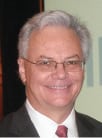Hints of What’s Next from GE on the Technology Front
 The global giant has plans for everything from improved gas turbine efficiency to energy storage to innovative wind turbine manufacturing techniques.
The global giant has plans for everything from improved gas turbine efficiency to energy storage to innovative wind turbine manufacturing techniques.
When Gary Leonard, General Electric’s global technology director for aero-thermal and mechanical systems technologies, spoke with POWER Contributing Editor Mark Axford at this year’s Gulf Coast Power Association’s Spring Conference in Houston, he commented on several ways GE is developing technologies for the power industry’s future.
GE has so many products that are part of the power generation industry. How do you prioritize the areas of focus to determine where the research dollars are spent?
Leonard: We try to monetize the value we can create for the world. If we make something more efficient, how much fuel does that save the world? If we reduce the cost of a product, how much capital investment does that save the world? You can always turn value into dollars, make an estimate of “How much will it cost GE to make this happen?” and then examine the risk of failure, so if you are proposing research with a high risk of failure, it better produce a lot of value and not a lot of cost.
GE’s current annual budget for R&D is $4.5 billion. Is all of that from GE stockholders, or is some of that provided by grants from governments and other organizations?
Leonard: Most is from GE stockholders. We do get some funding from the military for aircraft engines. Out of the $4.5 billion, about $600 million per year is allocated to the GE research centers and about $90 million of the $600 million comes from government and other agencies.
The hot buttons in the ERCOT market are demand response and capacity shortfall. There is a debate over whether new generation, old generation, and demand response should become eligible to earn a capacity payment. GE has worked to develop compressed air storage technology. Why do you think air storage has not caught on in the U.S. despite its 70% round-trip efficiency and $1,000/kW installed cost?
Leonard: In the U.S., compressed air storage technology is still not cost effective, even at $1,000/kW. While there may some local areas in the U.S. where the economics work, large-scale energy storage becomes economical when supporting grids have at least 15% to 20% renewable energy and the associated cycling. In Germany, we are starting to get some traction on compressed air storage plants sized at about 300 MW with 8 hours of peak duration. You can double the storage capacity by doubling the size of the cavern, and all of this happens for a small increase in project cost. That’s why I am very bullish about gigawatt-hours of storage capability; most of the cost is the turbo-machinery.
Tell me more about the battery technology that GE is working on to supplement wind farms.
Leonard: Since cost and weight are the key parameters, we started by setting a design specification that called out low-cost materials. We want to have energy storage capacity that is at least two times that of a lead acid battery as measured in amp-hours per pound weight. We think this will be economically viable during the next few years. If your mission is pure frequency regulation, maybe a lithium-ion battery makes the most sense. But GE is more focused on power firming and serious energy storage.
Is there any breakthrough technology on the horizon that you can talk about relating to wind turbines? Aside from the fact that they get bigger and bigger and now go offshore, where are we headed? Will we ever see smaller-diameter, multi-stage wind turbines?
Leonard: Well, there’s only so much energy to be captured in a wind stream of a certain diameter. We’ve looked at inlet funnels, and this might help, but I think wind turbines will be single stage for the foreseeable future, and they will get larger, not smaller. The problem is that the blades are already so long, transportation has become a significant challenge. So perhaps the “development” that we need is a better way to manufacture the blades—not in a conventional factory but in a temporary factory set up inexpensively at the location of the wind farm. GE is working with the U.S. Department of Energy on a design called “tension fabric blade.” Much of the blade material would be a high-strength cloth that could be delivered to the jobsite in rolls. We could make the blades longer since the allowable length of a truck on the interstate highway would no longer be a design constraint. This could be a game-changer.
You were personally involved in the hugely successful wet compression technology adapted to the GE LM6000 gas turbine and trademarked as “Sprint.” GE later introduced an ultra-high-efficiency 100-MW gas turbine (the LMS100) that included an intercooler. Are other advancements in wet compression and intercooling on the horizon for GE?
Leonard: We’re always taking technology to the next level. As it turns out, Sprint technology may someday be regarded as a disruptive technology since it is utilized by so many models of gas turbines. I’m confident that we will see more wet compression in GE gas turbine products. ■
— Mark Axford is a POWER contributing editor.